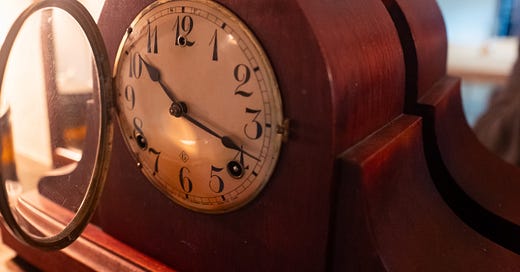noun: anachronism; a thing belonging or appropriate to a period other than that in which it exists, especially a thing that is conspicuously old-fashioned.
As I’m writing this, sitting in my living room, the mantel clock above a crackling fire just dutifully chimed the hour. I wind that clock, a Gilbert made in 1912, every Monday morning. It’s a ritual I enjoy—swing open the front glass, insert the big brass key in the slot and twist against the powerful tension of the two springs. The left spring powers the chime, the right side the timekeeping. It keeps pretty good time too, having been fully serviced a couple years ago. If it’s running a little slow, I advance the minute hand. If it’s fast, I simply stop the pendulum for the needed interval. I often marvel that this humble 112-year old machine, built in Winsted, Connecticut, alongside thousands of others over Gilbert’s existence, still serves a useful function. I doubt there is an object, of any kind, that is as old on my city block. Most of the houses here were built in the 1920s and ‘30s. Respectable age, but this clock is older, and I doubt anyone keeps much of anything older than it, and certainly not something that still serves a daily function like telling the time.
Keep reading with a 7-day free trial
Subscribe to SWIMPRUF to keep reading this post and get 7 days of free access to the full post archives.



